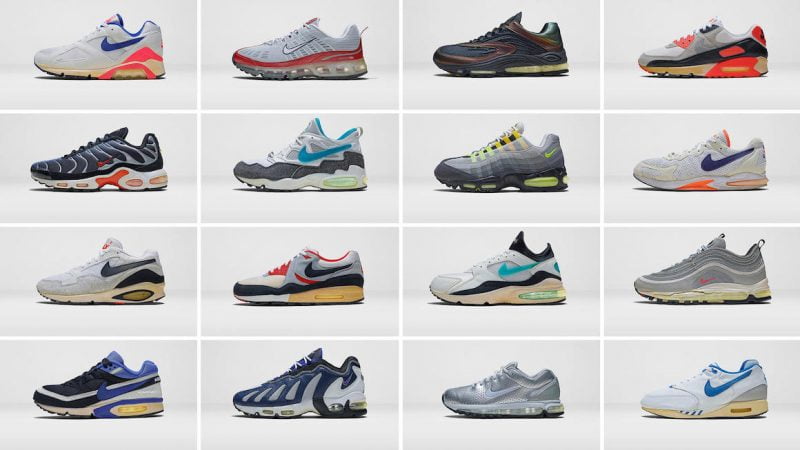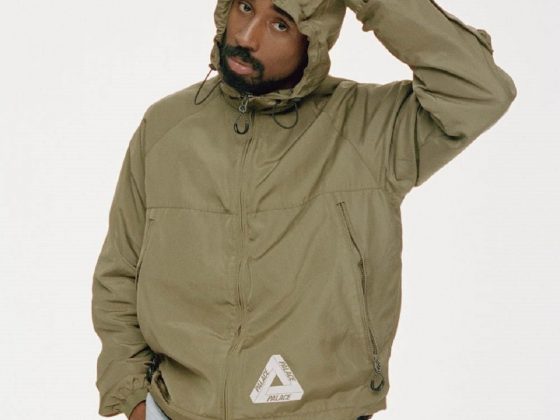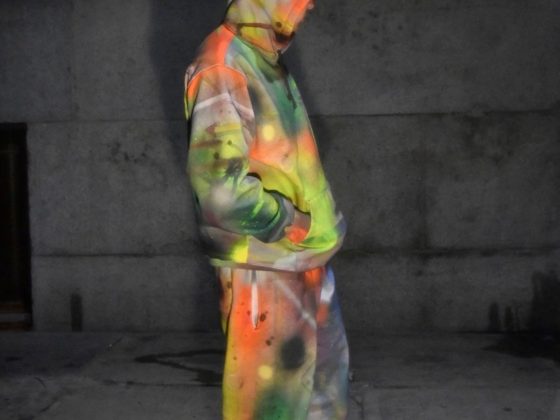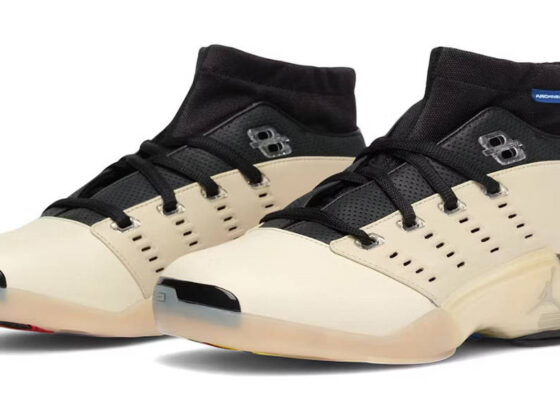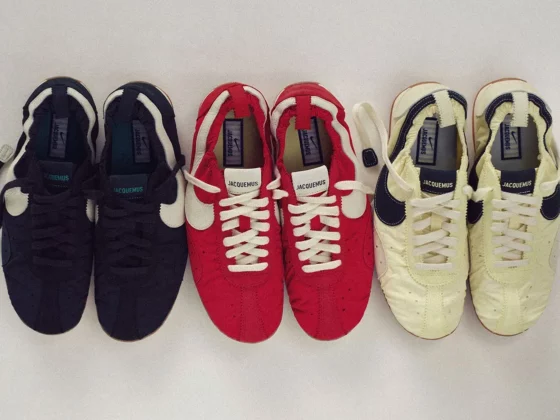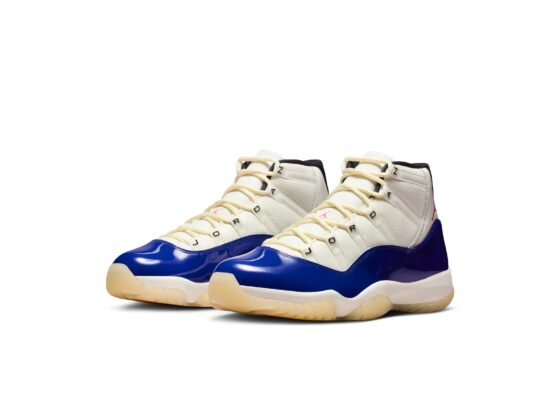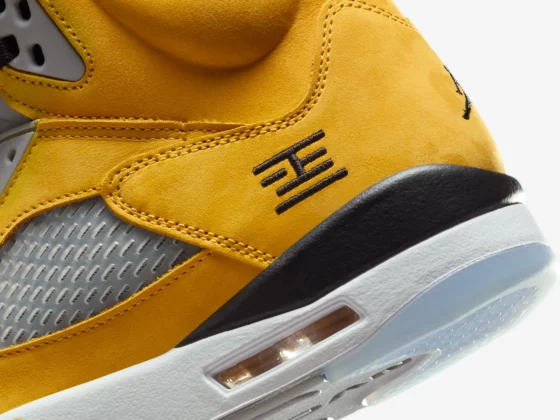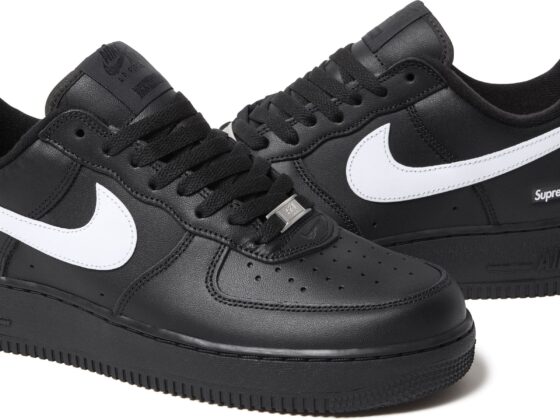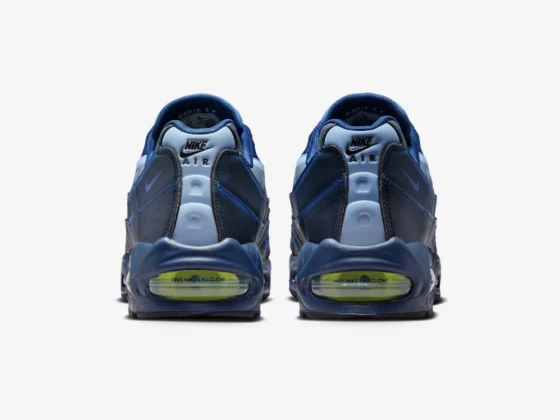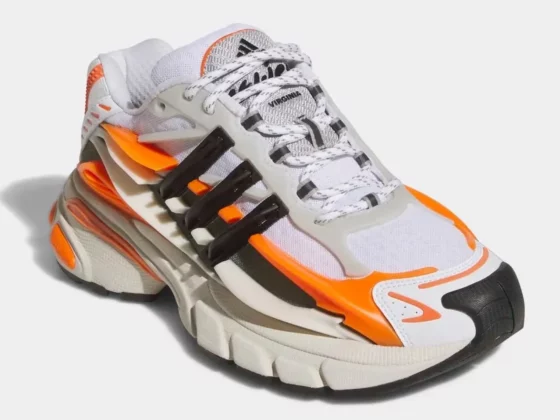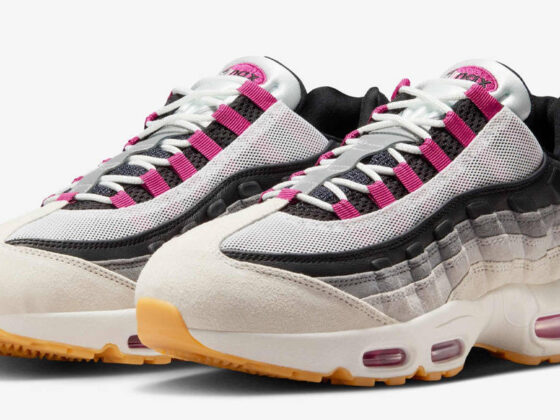What is Nike Air Max? Depending on who you ask, that question could have a multitude of answers. To some, Nike Air Max is simply a style of trainer that they wear. To others, Air Max is a way of life. There are very few shoe ranges in sneaker history that have been as impactful as Nike’s Air Max line. The Air Max lineage has sparked some of the most iconic silhouettes, many of which have become an integral part of sneaker culture.
As time has passed, the love and passion that surrounds Nike’s Air Max range have only grown. Here, we’ll give a brief timeline of just how Nike’s Air Max technology came to be.
Walking On Air
Nike’s affinity for air starts back in 1978 when a former NASA engineer named Frank Rudy had the idea of using air cushioning technology in a sneaker. The Air Tailwind was the first sneaker to use air technology and, in Nike’s own words, “consists of pressurised air inside a tough yet flexible bag and provides more flexibility and spring without compromising structure.” Although Tinker Hatfield is credited for introducing visible Air, Rudy was the man who pioneered the underlying technology.
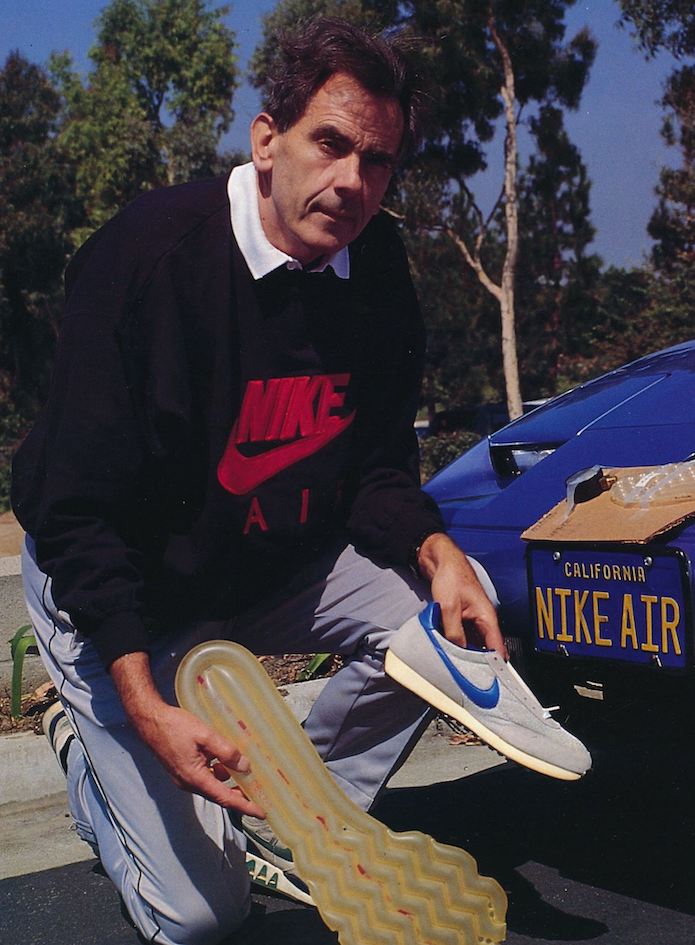
By 1982, Bruce Kilgore had put this air technology into the Air Force 1, which then inspired Peter C. Moore to put the “Air” into Air Jordan. Nike knew that its Air technology worked, but it was reticent to have the world see it on display. For Hatfield, this “visible air” was something that he wanted to be showcased to the world. Most sneakerheads (should) know the story behind the Air Max 1.
As legend has it, Hatfield was on a trip to Paris when he came across the Centre Georges Pompidou; a museum that uses “inside-out” architecture. Fascinated by the idea, Hatfield headed back Nike’s headquarters looking to put this concept to the test on a pair of shoes. The Air Max 1, as it came to be known, was a true revolution. Air Max culture was officially born.
Hatfield’s Air Max creation would kickstart what would become a global phenomenon. Over three decades later and the Air Max line continues to thrive. For many, the Nike Air Max collection epitomises everything about sneaker culture. Whilst Hatfield may not have known it back in 1987, he was starting a footwear phenomenon.
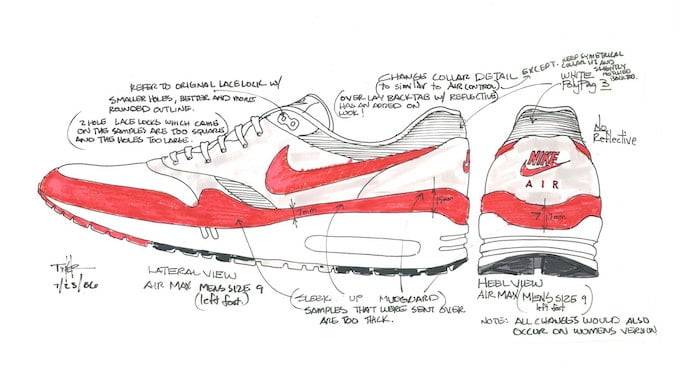
A Culture Revolution is Born
Celebrities like Tupac Shakur had been spotted rocking the Air Max 1 which only added to the success of the model in the early 90s. As streetwear was just hitting its stride, the Air Max range was running alongside it. Baggy pants, Coogie sweaters and a pair of Air Max shoes was fast becoming a kind of uniform. Whilst chunky sneakers like the Nike Air Force 180, Nike Uptempo and Ewing range were popular, things were about to change.
The shift in cultural change was also on the way. KRS-One name-dropped the Swoosh in the classic Dope Beat stating: ” I don’t wear adidas cos my name ain’t run/Got Nikes on my feet and to be complete.” Nike was well and truly on the way to becoming a staple part of wider pop culture. As the Air Max line was picking up pace, Nike was cementing itself as a reference point in both music and sports; two worlds that have always run in tandem.
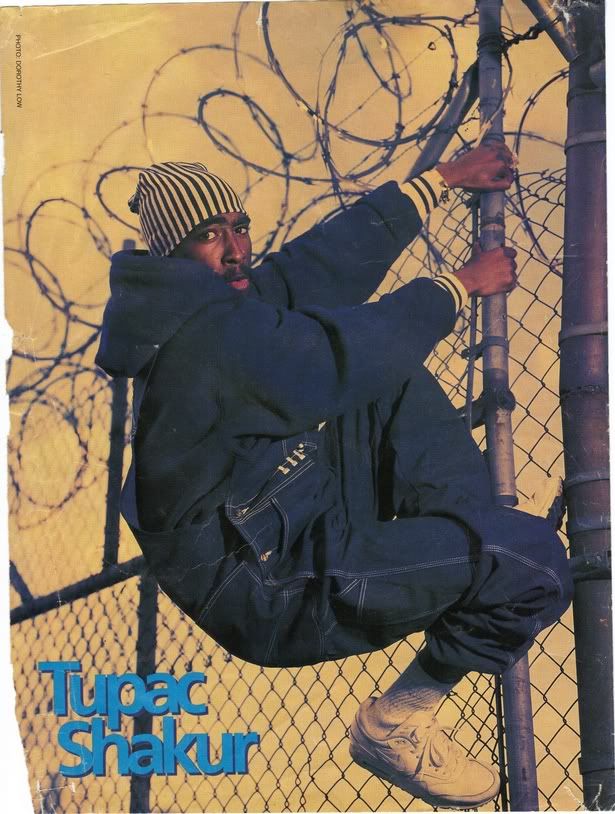
Third Times A Charm
In three short years, a wide variety of Air Max models had been conjured up. The Nike Air Walker Max, Nike Air Max Light and Nike Air Max III (which became the Air Max 90 after its retro in 2002) all followed each other, much to critical acclaim from both runners and those in the street. The Air Max III marked a brand new evolution of Nike Air Max. Whilst its predecessors had been successful, the introduction of the Air Max III sparked a global cultural change.
What set the Air Max III apart from its competitors, and its big brothers was the use of multiple materials. Leather, suede, nubuck, and mesh all adorned the original “Infrared” colourway of the sneaker. A bigger air unit, complete with an orange hue casing, drew people to the wearer’s foot. This was what set Nike apart from the rest.
By the time the Air Max BW came around, the line was well and truly cemented in sneaker culture. Nike knew that its success lay in continuing to make the Air Unit bigger and more comfortable. Innovations with the Air Max 180, the first sneaker that allowed 180 degrees of visible air, was an instant hit. However, things were about to change.
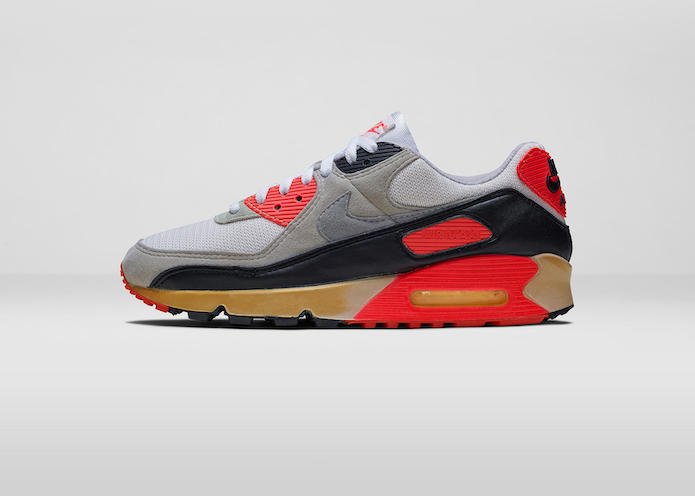
Put Your Best Foot Forward
After the Air Max 180, things began to slow down in terms of sales. Whilst models like the Air Max 93, Air Max 94, Air Max 2 and Air Max 2 Light were comfortable, the designs were less than appealing. Nike was in a rut. It needed a design that was nothing like the previous Air Max sneakers but continued the legacy of Air. That’s when Sergio Lozano stepped in.
Lozano had spent his formative years working for Nike on tennis, training and ACG products. He was approached to create the next Air Max sneaker in 1994, a period when the Air Max line had now fallen far behind Nike’s basketball sneakers. The running design team explicitly told Lozano to take a risk with the sneaker silhouette; giving him free rein over what the next Air Max model would look like.
In an interview with Sole Collector, Lozano explained how “Everyone around me kept saying, ‘just go have fun,’…I was still young and a bit naïve, in a good way, and that was all I needed to hear.” Lozano was fortunate to have an office that looked out on a lake at the Nike campus. As he sat down to design the Nike Air Max 95, he pictured the process of the earth being eroded away by rain, imagining what would be left behind. His design was put in a drawer but Lozano could not stop thinking about it.
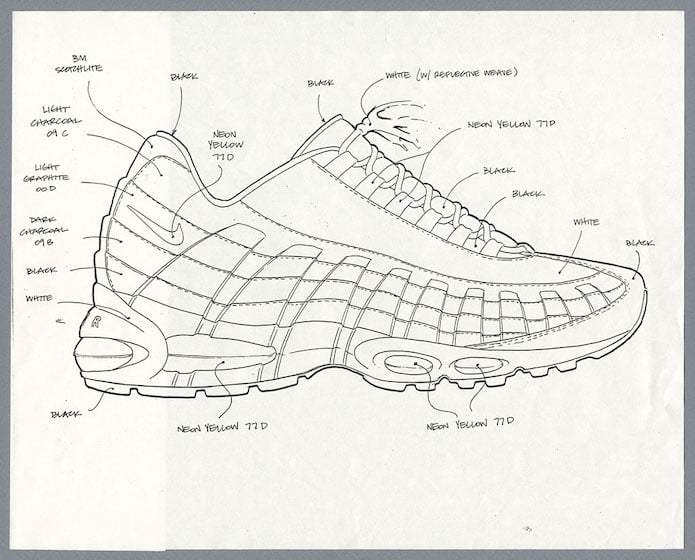
When he eventually put the design forward to Nike, not everyone was as enthusiastic. The futuristic sneaker blueprint was met with much criticism. Lozano’s design was unconventional, to say the least. Previous Air Max models had used large Swoosh branding, yet Lozano’s took on a much more refined approach, opting for a small Swoosh on the heel: a feature that was only included after much back and forth between Nike executives and Lozano.
Another shocking concept was the colour scheme. The original colourway used varying shades of grey, a black midsole and pops of neon yellow; a homage to Nike’s heritage defining racing kit. “I was told that grey didn’t sell and took that as a challenge” Lozano explained in an interview. It seems as though Lozano’s confidence in his sneaker certainly paid off. Not only did the sneaker receive critical acclaim from runners, but it quickly became a fashion staple in cities around the world. Air was back.
In London, Air Max 95s were nicknamed “110s” due to their £110 price point. AM95s have cemented themselves in grime music, with British rappers like Skepta, Wiley and Chip all rocking the sneaker. The Air Max 95 was the first Air Max model to be referenced in multiple rap songs, most notably in The Game’s 2003 hit song “Hate It or Love it” where the rapper stated: “That’s 10 years, I told Pooh in ’95/I’ll kill you if you try me for my Air Max 95s“.

A Silver Bullet
Following on from the success of the Nike Air Max 95 was going to be tough. The shoe was an instant hit and it’s follow up model, the Air Max 96, was less so. Hoping to use the same award-winning formula as the Air Max 95, the Air Max 96 replaced the traditional gradient upper for a more bold option. The combination of blue leather and grey mesh on the OG should have been a hit, but it was a flop. Sensing that the Air Max line was in trouble (again), Nike needed another big hit.
Christian Tresser, a footwear designer working on Nike’s football boot range, had gotten the call that Nike wanted him to design the next Air Max. After the successful innovation of the Air Max 95, Nike knew that digging into old school Air Maxes was not going to work. Sitting down with Nike to discuss the process, Tresser explained that: “The nature of it was water dropping into a pond. The water would drop and radiate out to the Air unit”.
The Nike Air Max 97 was also the first Nike sneaker to use a completely visible Air unit: a monumental achievement for both Tresser and Nike. The shoe was met with monumental success, having been worn by the likes of Victoria Beckham, Ronaldo (R9) and many more. In countries like Italy, however, the Air Max 97 became a staple part of everyday life. In 2016, Italians were even awarded their own Air Max 97 as a thank you for their love of the silhouette.
On the Plus Side
As 1998 kicked off, things were looking up for Nike’s Air Max range. The Nike Air Max 98 had not been one of the most successful sneakers for Nike. Although now the sneaker is one of the most popular, back in the late 90s, it was not. It had used the same sole as its AM97 big brother. However, the change in the upper was not for everyone. Just like the Air Max 96 following the Air Max 95, many were left disappointed with the Air Max 98.
When Sean McDowell started at Nike, he landed a dream job. However, he was also extremely new to the rigid Nike design process. When he pitched a shoe exclusive to Footlocker, his lack of experience showed. The Florida native was keen to create a sneaker that represented the sunsets he was so used to watching. The shoe, which was called the Nike Air Max Plus (or Tuned Air aka Tn), was not looking likely to get released.
McDowell had presented the shoe to his colleagues, many of which said it would never get approved. His lack of experience, however, was also what led him to create a sneaker that he wanted to wear. In fact, he had never even drawn a Swoosh, something that became one of the Tn’s most distinctive features. McDowell explained to Nike that “the shape is a little bit off, and I put the border on the inside, when technically all the brand guidelines say to go outside.”
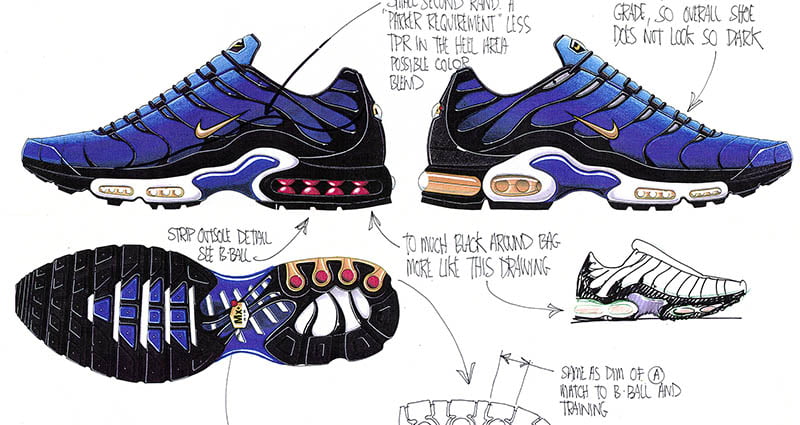
However, when McDowell eventually got a sample pair made and approved by Nike, the battle still wasn’t over. Talking to future CEO Mark Parker about his struggles, Parker suggested a different approach to market research: put the shoe on a shelf at the store right when school lets out and see what happens. It didn’t take long for the Tn to become a success.
“Five or 10 minutes later, there were like 10 kids flocking to the shoe asking, ‘What is this? How do I get it? The associates were looking around like, ‘I’ve never seen that thing before, I don’t know how much it costs, I don’t know where it came from.’ while the kids were running around like, ‘I want to buy this thing.’ They were almost frantic. I was beaming” McDowell told Nike. Now, the shoe is a staple part of sneaker culture in countries across the globe.
2003 to Now
Innovations have continued to follow Nike’s Air Max line, ever since the first Nike Air Max back in 1987. The introduction of the Air Max 2003 was not one of the strongest models in the Air Max timeline. Although all Air Max models have a story, it felt as though things had slowed down. This was not the classic Air Max that people had been looking out for. After three years, Nike had gone back to the drawing board once more. It was determined to evolve the Air Max line again.
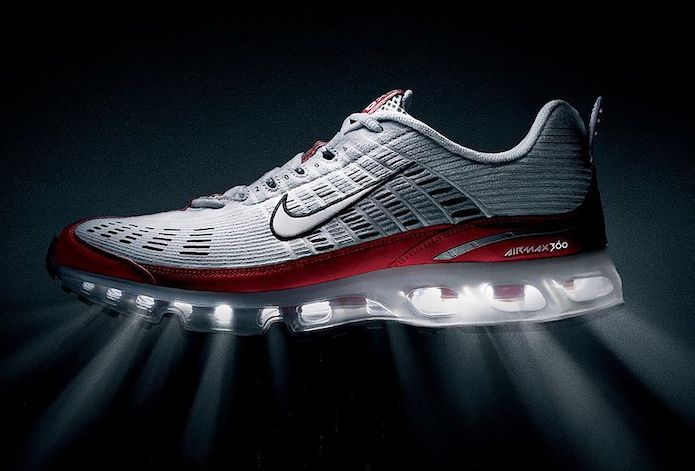
By 2006, Nike had completed its challenge to make a fully visible and wearable Air unit: the Air Max 360. Taking things back to the roots of the first Air Max, Nike had dropped a white and red AM360 that showed the journey from 1987 to 2006. The shoe was an instant hit with runners and was fast becoming a popular sneaker in the world of street culture. It’s safe to say that Nike hit the nail on the head.
As every Air Max ever made before it, Nike wanted to push its limits. Moreover, Nike wanted to prove that it could continuously improve the Air Max range. With that in mind, the Swoosh set about to create arguably some of the most important sneakers in its history in the following years.
The Nike Vapormax was another first in Air Max models, taking five years to perfect before it was introduced to the public. Using Nike’s award-winning Flyknit technology on the upper, the shoe featured separate Air units that came together. It was met with global praise, marking Nike’s evolution in the revolution of Air.
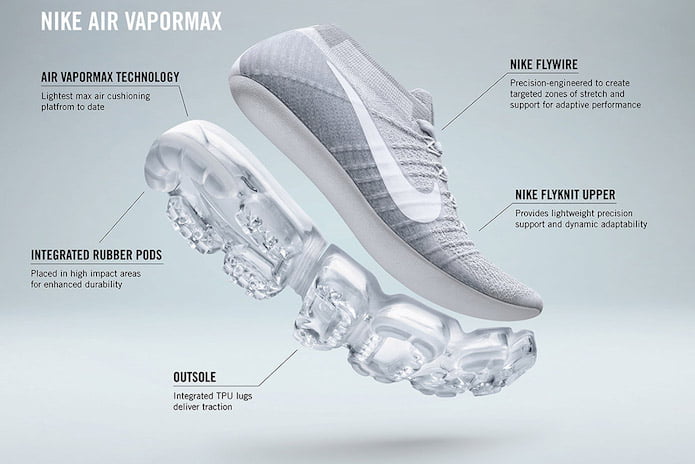
Final Thoughts
So, what are Nike Air Max? Simple. Nike Air Max is one of the most important lines in footwear history. The commitment to push visible air to its limits has seen more than 75 sneakers produced over the past 33 years. As sneakerheads around the world get ready to celebrate the Air Max 90s 30th birthday and the Air Max 95s 25th, it’s important to recognise the historical importance of Nike’s Air. As Tinker Hatfield put it:
“The mid-’80s was a period of transition from a more formalized hierarchy to a looser, street-based, more inspirational form. We at Nike were part of that wave, and I just happened to be a designer doing it from a footwear perspective when nobody else was.”
Over three decades later, Nike is still doing just that.



